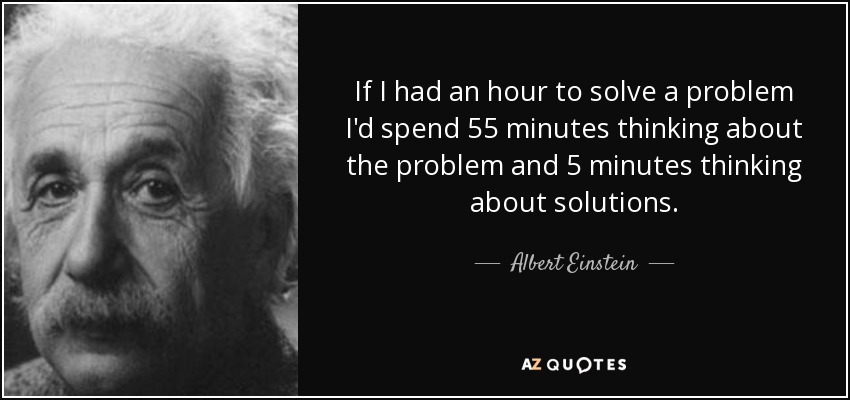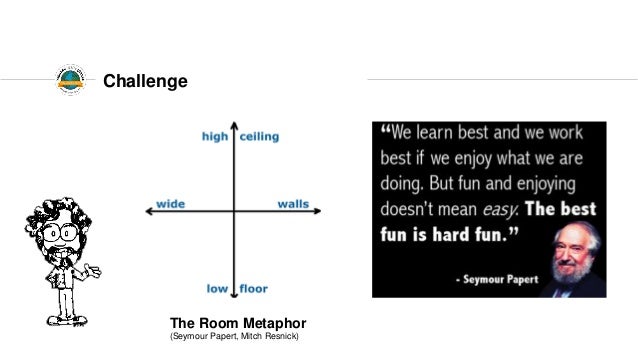I’ve been thinking about the importance of creating the opportunities for requisite diversity in challenge-based learning. Back in the 1990s when I was still teaching Drama, even production work became project-oriented and my students never had lock-step content-driven pathways to follow. They were regularly expected to forge their own pathways, assess each situation, and approach it from problem-solving and design-thinking mindsets.
I’ve been considering some of the published materials around project-based learning and problem-based learning, and have concerns about the way many limit learning opportunities. The teacher-derived problem is one of the practices that concerns me most – determining the specifics of an issue/problem to be addressed is, to my mind, the single most important step for a learner in challenge-based learning. When a teacher isolates and specifies the problem to be solved, they also take away the core elements of complexity and systems thinking that are the hallmarks of a high-quality learning experience.
I’m reminded of the Year 2 teacher who looked at how to shift the exercise of planting and observing the growth of a bean in science into a more interdisciplinary, STEM-informed challenge for students. Instead of the usual here’s a seed and here are some instructions to planting it, she instead began by asking her class “What can we do about reducing world hunger?” – then through a process of Socratic inquiry the students considered what underlies the reality of world hunger. They, perhaps not explicitly, paralleled the discovery phase of the Design-thinking and identified food production (farming and agriculture) as one of the factors…. and, over time arrived at the idea of looking at better ways of growing crops – that provided a need to plant seeds.. it also meant there was far more vested interest and motivation to learn as the students were committed to and deeply implicated in the need and desire for viable solutions – they took on responsibility for the people fo the world who are starving – their success or failure in learning about plant growth would impact millions around the world.
When we as teachers try to simplify learning – and I don’t care the reason – we rob students of opportunities to learn – we take away opportunities for deep engagement, personal and collective responsibility and we create something that is often little different than chalk-and-talk content delivery. The real experience of learning lies in that first step of understanding the problem – and this oft-quoted statement – and regularly attributed to Einstein – sums up the importance:

Too often the solution phase is little more than brainstormed guesses at actions that might have an impact – without the deep empathetic insights, solutions are often disconnected from the complexity of conditions that create, enable and maintain a problem. Solutions offered from a process that is more focussed on how many ideas were expressed on “Post-it” notes rather than deep, well-informed understanding can be irrelevant, disrespectful, trivial, or at worst, dangerous – I regularly use the Cane Toad as an example -its application to the problem of cane beetles in Queensland was not derived from a rich understanding of complex ecosystems and has generated far more issues than the one itot attempted to resolve.
At the moment I have 14 discreet classes operating across a range of activities that are all predicated on learner development, systems thinking, design-thinking, global connection, collaboration, and multiple iterations of outputs for different contexts. Each week I see 300+ students who are working in teams, and each group has started to refine and specify the elements of the challenges that they feel they can tackle. No two groups have defined the same problem – although some are similar, related, and intersect with others – groups are also becoming more and more stratified as they each begin to proceed at different rates than other groups. There are some intentional limitations:
- deadlines for submission;
- modes of expression and presentation of the solutions they design;
- external requirements by third-party contexts for recognition.
I’ve tried to embrace a mindset I learned via Seymour Papert (and later Mitch Resnick) – “low floors, high ceilings, and wide walls” they applied it to educational technologies, I’ve tried to make it a fundamental principle of all learning experience design:
When discussing technologies to support learning and education, my mentor Seymour Papert often emphasized the importance of “low floors” and “high ceilings.” For a technology to be effective, he said, it should provide easy ways for novices to get started (low floor) but also ways for them to work on increasingly sophisticated projects over time (high ceiling).
For a more complete picture, we need to add an extra dimension: wide walls. It’s not enough to provide a single path from low floor to high ceiling; we need to provide wide walls so that kids can explore multiple pathways from floor to ceiling.— Mitchel Resnick
This almost invariably leads to the messy and unpredictable classroom – an immersive and engaging space that is really only fully understood by being immersed in it – about 2 decades ago I began framing this way of working as “generative play” – trying to capture the open-ended, playful, unbound process of learning through deep, role-based, immersive inquiry that embraces the ludic and processual, participant-directed activity that creates new directions and new modes as it evolves. I am still faced with the challenge that the way we organise schools, teaching, and assessment largely militates against meaningful engagement and commitment by those engaged in learning. Learning is often subjugated to the more pressing and immediate demands of administrivia, reporting, results, timetables, minimalist content, marketing, school rankings, and league tables.
I’m looking for these elements to be present in the learning experiences offered in the current professional learning program I’m participating in. I’m hoping that we don’t find ourselves caught up in something that binds us as “students” rather than unleashing us as “learners”.







Awesome.
I would love to learn more about how you have framed the activities for your 14 classes.
I’ve never heard of ‘wide walls’ before and love that addition to low entry, high ceilings. May there be many paths for all of us learners.
Thanks for you insight and long term commitment to innovative education 🙂